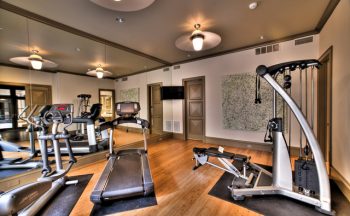 February 2021
February 2021
By now it should be clear that COVID will recur much like other viruses. This should come as a surprise to nobody. Never in the history of man (or woman) have we been able to stop a pandemic virus. There will be no miracle vaccine making us immune. There is a growing realization we must learn to live with the virus rather than maintain excessive precautions causing greater harm.
To many this was the view back in March 2020 when COVID became a concern. Since then the response has been to implement a range of measures of which only some are effective. The cost has been high.
Cure Greater than the Disease
Some view COVID as a first-world problem.
AIDS/HIV, malaria and tuberculosis are all far more devastating, killing an estimated three million people every year. Their effects are not felt here in Canada. Our first-world focus on COVID has shut down economies worldwide. COVID research has taken research and health dollars away from these more fatal diseases. Lower income countries, and greater numbers in our own country, suffer more from the consequences of COVID than the disease itself.
The Fear Factor
Our society has implemented a range of measures of which only some are effective. We have failed to consider the cost of these actions.
Many refuse to leave their home except when absolutely necessary. There is no way to know how many are suffering from isolation, depression and related ailments affecting their health. When walking the street many turn their back while passing others. Some jump off the sidewalk onto grass, bike paths, the road or cross the street to avoid other people. Within high-rise communities interaction and activities are discouraged by closure of amenities. Elevators become battle zones as some feel they have exclusive right of use and demand others not enter.
We have responded to fear fueled by a sensationalist approach to scientific reporting that includes dramatic headlines omitting important limitations or lacking in context. This fails to benefit anyone and explains disturbing inconsistencies nobody seems prepared to address …
We have responded to fear fueled by a sensationalist approach to scientific reporting that includes dramatic headlines omitting important limitations or lacking in context. This fails to benefit anyone and explains disturbing inconsistencies nobody seems prepared to address including:
- Greater support for a growing body of evidence on mask wearing over a century of scientific study,
- Awareness of reported infection numbers which may be indicative of increased testing rather than a worsening situation, and
- Increasing deaths from other causes as a result of our actions.
While precautions against COVID-19 are certainly warranted, there comes a point where poorly considered actions are unhelpful or worsen matters. Those reacting through fear continue to support any and all restrictions. Those looking at the data and what we’ve learned feel some restrictions are unreasonable or unnecessary.
While precautions against COVID-19 are certainly warranted, there comes a point where poorly considered actions are unhelpful or worsen matters. Those reacting through fear continue to support any and all restrictions. Those looking at the data and what we’ve learned feel some restrictions are unreasonable or unnecessary.
Our Cities will Survive
One thing COVID can’t change is human nature. People have a need to be near and with other people. This partially explains how our workplaces and cities developed. Urbanization has been the most prevalent trend since most of us were born. People want to be in the middle of cities and not isolated in suburbs or rural areas. It explains our high-rise towers, efficient transit infrastructure, restaurants, galleries, street vendors, clubs and retail all of which are centrally located.
The High-Rise and Condominium Conundrum
What seems to have been forgotten is that those who own a condominium also “own” common areas and amenities. Many purchase smaller condominiums knowing the small size reflects access to common areas for recreation, socialization and exercise. When these are closed off a condominium no longer seems comparable to ownership of a single-family home. Fewer are less likely to consider condominium or high-rise living when such measures are adopted.
Condo boards implemented a range of measures some of which may have extended beyond their authority. Some closed common areas before instructed to do so by government authorities, and kept them closed as government restrictions were eased. Others denied building access to caregivers and delivery personnel. Elevators were restricted to one or two people at a time making them inaccessible to many in a timely manner. Masks are required when walking a few feet to the trash chute. Many enhanced cleaning protocols implemented earlier in the year are now viewed as unnecessary.
Regional restrictions treat our high-rise communities as public buildings rather than privately-owned homes which are exempt from these same precautions.
High-rise condominium living is based on shared access to common areas and amenities. Restricting resident access to elevators, exercise or social spaces was never part of the condo living arrangement.
Never in the history of man has anyone been able to stop a pandemic. (Yes, I’m repeating this because it is important.) Continuing many of the restrictions in the high-rise home and throughout our cities may not be a prudent course of action.







